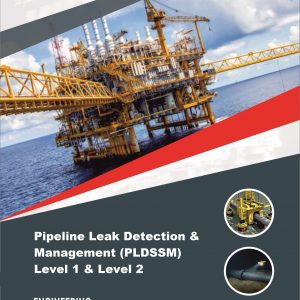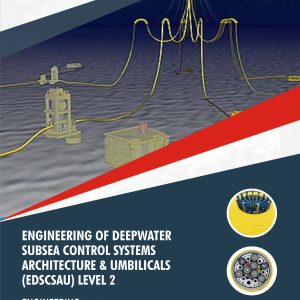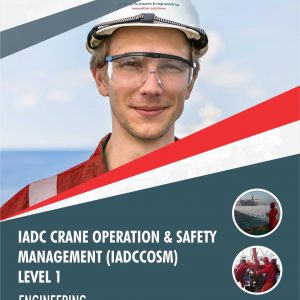Description
The course “Marine Operations Security & Security Responsibilities for Graduates & Mariners (MAOSSRGM) Level 1 & Level 2” is designed to provide graduates and mariners with a comprehensive understanding of marine operations security and the corresponding security responsibilities in the maritime industry. The course aims to enhance participants’ knowledge and skills in maritime security practices and procedures.
MAOSSRGM Level 1 & Level 2 covers Ship Architecture & Parts, Marine Operations i.e. Towing, Mooring and Anchors, Handling Heavy Loads at Sea, Personal Transfer at Sea, Underwater Intervention, Diving, Underwater Work Systems, Remote Operating Vehicle and Manipulators, Underwater Concreting and Grouting, Offshore Surveying, Navigations and Seafloor Surveying, Temporary buoyancy augmentation, Background & History of Maritime Security i.e.Types of Maritime Attack, Maritime Security Incidents, Maritime Security Threats etc. Maritime Security Regulations: SOLAS & ISPS CODE eg. New Maritime Security Requirements, SOLAS Amendment, Automated Identifications Systems (AIS) (SOLAS Chapter V), Ship Identification Number (SIN) (SOLAS Chapter XI-1), Ship Identification Number (SIN) (SOLAS Chapter XI-1), Application of Code Obligations of Contracting Government (SOLAS Chapter XI-2), Requirement for Company’s & Ships (SOLAS Chapter XI-2), Ship Security Alert System (SOLAS Chapter XI-2) Threats to Ships (SOLAS Chapter XI-2), Masters Discretion (SOLAS Chapter XI-2), Requirements for Ports (SOLAS Chapter XI-2), Control (SOLAS Chapter XI-2), Alternative Agreements (SOLAS Chapter XI-2), Equivalent Arrangement (SOLAS Chapter XI-2) Communication (SOLAS Chapter XI-2) etc., ISPS Code Implementation, ISPS Code-Security Responsibilities and more
MAOSSRGM Level 1 & Level 2 is designed to provide detailed knowledge of marine architecture operations security & security responsibilities and will assist those who are switching or enhancing there career in marine security.
Course Outline
Architecture & Parts of a Marine Ship
Towing
Mooring and Anchors
Handling Heavy Loads at sSea
Personal Transfer at Sea
Underwater Intervention, Diving, Underwater Work Systems, Remote Operating Vehicle and Manipulators
Underwater Concreting and Grouting
Offshore Surveying, Navigations and Seafloor Surveying
Temporary buoyancy augmentation
History of Maritime Security
Types of Maritime Attack
Maritime Security Incidents
Maritime Security Threats
Background and History of Requirements
New Maritime Security Requirements
SOLAS Amendment
Automated Identifications Systems (AIS) (SOLAS Chapter V)
Ship Identification Number (SIN) (SOLAS Chapter XI-1)
Ship Identification Number (SIN) (SOLAS Chapter XI-1)
Application of Code Obligations of Contracting Government (SOLAS Chapter XI-2)
Requirement for Company’s & Ships (SOLAS Chapter XI-2)
Ship Security Alert System (SOLAS Chapter XI-2)
Threats to Ships (SOLAS Chapter XI-2)
Masters Discretion (SOLAS Chapter XI-2)
Requirements for Ports (SOLAS Chapter XI-2)
Control (SOLAS Chapter XI-2)
Alternative Agreements (SOLAS Chapter XI-2)
Equivalent Arrangement (SOLAS Chapter XI-2)
Communication (SOLAS Chapter XI-2)
ISPS Code : International Ship & Port Facility Security Code
ISPS Code : Objectives
ISPS Code : Functional Requirements
ISPS Code : Declaration of Security
ISPS Code : Ship Security Assessment (SSA)
ISPS Code : Ship Security Plan (SSP)
ISPS Code : Records
ISPS Code : CSO and SSO
ISPS Code : Training, Drills & Exercises on Ship Security
ISPS Code : Scope of Application
Examples of Relevant National Legislation and Regulations
Ship / Port Interface
Ship to Ship Activity
Port Facility
Designated Authority
Recognized Security Organization (RSO)
Security Incident
Ship Security Officer (SSO)
Company Security Officer (CSO)
Port Facility Security Officer (PFSO)
Contracting Governments
RSO’s
The Company
The Ship
The Port Facility
SSO
CSO
PFSO
Facility Personnel with Specific Security Duties
Other Personnel
CSI Example
Assessment
Participant underpinning knowledge of Marine Architecture Operations Security & Security Responsibilities will be accessed with short answer multiple-choice questionnaire at the conclusion of the course.
Outcome
Participants will gain an in debt understanding of Marine Operations Security & Security Responsibilities.They will also be able to function with minimum supervision as RSO, SSO, CSO, PFSO or Facility Personnel with Specific Security Duties for IOCs, marine contractor, shipping company.
Professional Certificate
Issued directly by Chess Subsea Engineering Europe.
How to Register
Click here to download registeration booklet on msword and email completed booklet to info@chesssubseaengineering.org directly.










